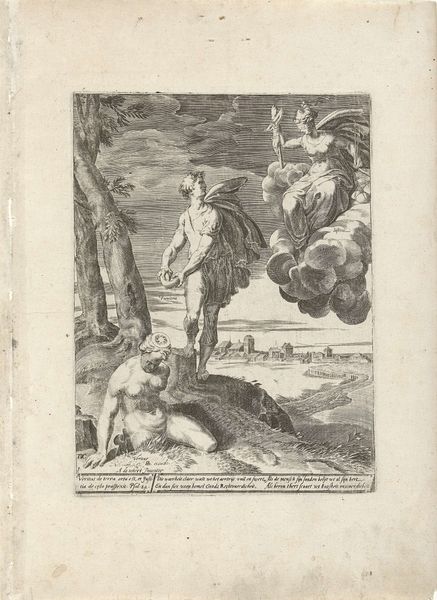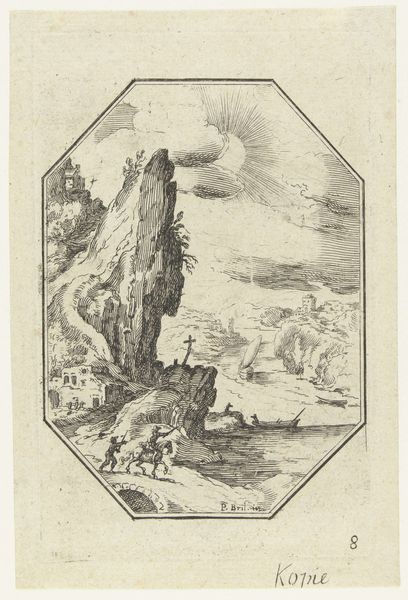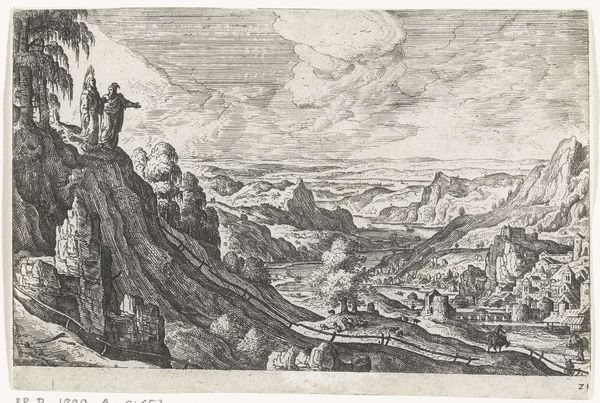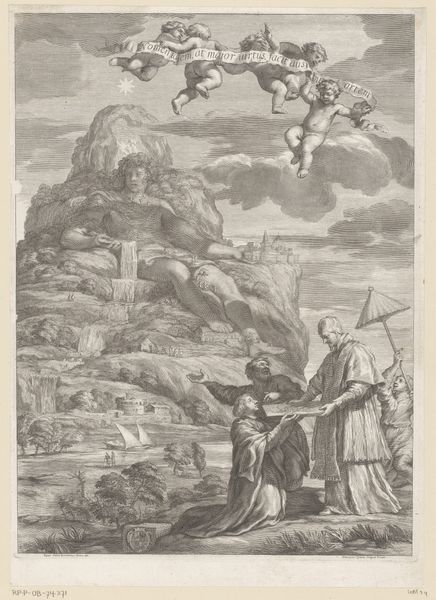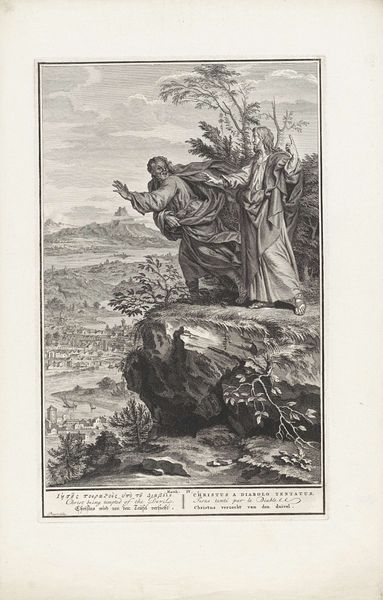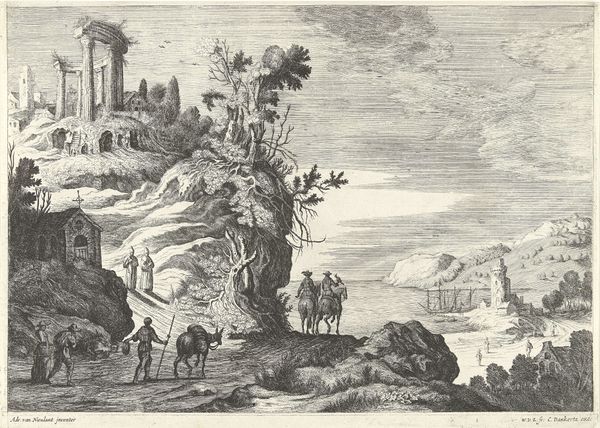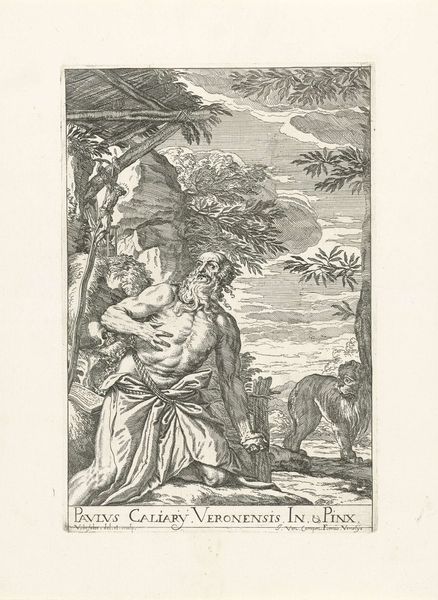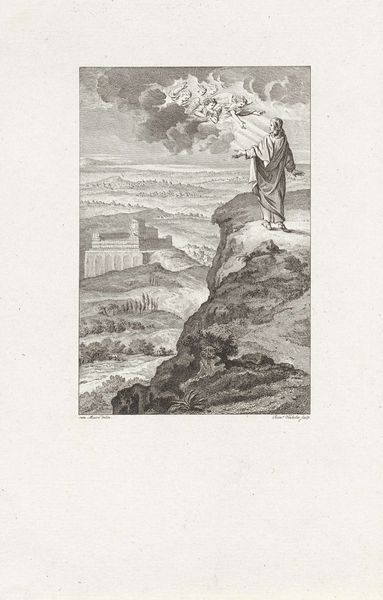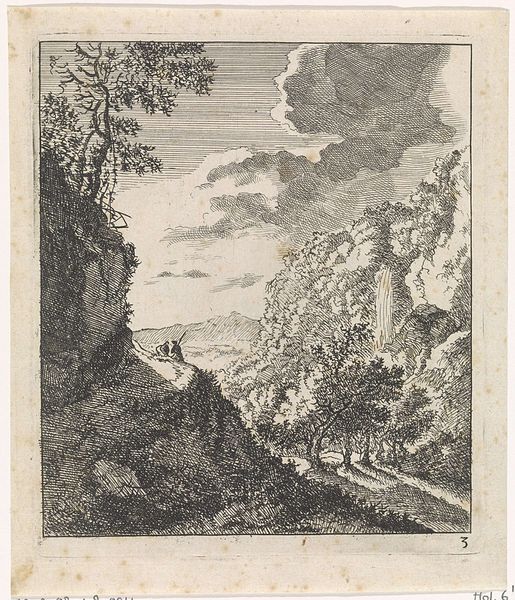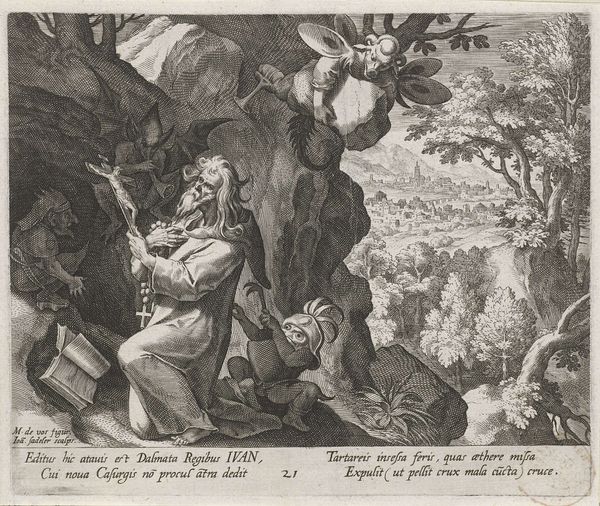
print, engraving
#
allegory
# print
#
landscape
#
mannerism
#
history-painting
#
engraving
Dimensions: height 245 mm, width 203 mm
Copyright: Rijks Museum: Open Domain
Curator: Before us is "The Temptation of Christ in the Wilderness," an engraving made around 1582 by Johann Sadeler I, currently residing in the Rijksmuseum. Editor: The stark contrast immediately draws my eye. The figures are positioned quite dramatically against the vast landscape. I get a sense of foreboding, like a pivotal moment captured just before the storm breaks. Curator: Absolutely. It's an example of mannerist landscape, focusing on moral lessons through historical narrative. The devil pointing towards civilization; an offer of power. We have to understand the politics of religious imagery at the time; engravings such as this served a public role, delivering didactic messaging, especially within Counter-Reformation efforts. Editor: Indeed, note how the landscape isn't just a backdrop. The fine detail achieved through the engraving process emphasizes the texture of the rock face and individual trees, turning nature itself into a protagonist almost. What materials were Sadeler and his contemporaries consuming, and from where, in order to advance such craft? Curator: Considering this was widely distributed as a print, we can explore questions about accessibility of art at the time. How this specific depiction was reproduced and dispersed, shaping public understanding of biblical narratives and solidifying the institution of the church itself, particularly at a time of religious division across Europe. Editor: It really brings up interesting thoughts. It highlights both personal temptation and broader societal powers at play through material manipulation and dissemination. Curator: A fascinating convergence of material processes and socio-political factors influencing the artwork's purpose and reception. Editor: Exactly, it is almost as if the engraving, in and of itself, performs an allegory in reproduction, reminding us to interrogate the context of art, even centuries later.
Comments
No comments
Be the first to comment and join the conversation on the ultimate creative platform.

